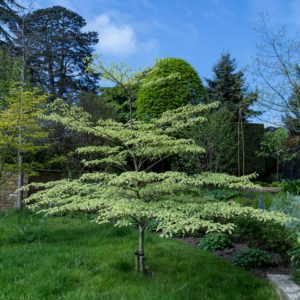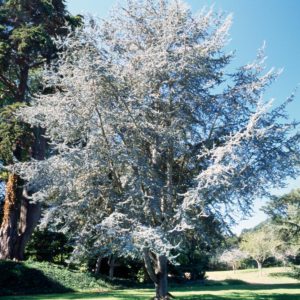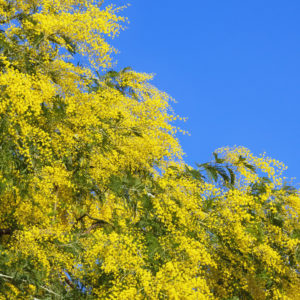Pyrus salicifolia Pendula / Weeping Silver Pear
Price range: €180.00 through €600.00
Frequently Bought Together



Description
Quick Facts
- Common Name: Weeping Silver Pear, Willow-leaved Pear
- Botanical Name: Pyrus salicifolia ‘Pendula’
- Plant Type: Deciduous tree
- Mature Height: 4-6m
- Mature Spread: 4-5m
- Flowering Period: April
- Flower Colour: Creamy-white flowers
- Foliage: Narrow willow-like leaves, silvery-grey
- Hardiness: RHS H6 (hardy)
- Soil Requirements: Well-drained, tolerates most soil types
- Aspect: Full sun to partial shade
- Maintenance: Low to moderate
Description
Experience the ethereal beauty of Pyrus salicifolia ‘Pendula’, one of the most elegant and romantic small trees for Irish gardens, bringing year-round silvery presence and graceful weeping form that creates a stunning focal point in any setting. This outstanding ornamental tree offers exceptional beauty—distinctive narrow willow-like leaves of shimmering silvery-grey that catch the light beautifully throughout the seasons, elegant pendulous branches that cascade like a silver fountain, creamy-white spring blossoms that contrast beautifully with the silver foliage, and a compact size perfect for smaller gardens, courtyard settings, and formal designs where space is precious but impact is essential.
Throughout spring and summer, this captivating tree displays its characteristic narrow leaves of soft silvery-grey, each measuring 3-9cm in length and covered with fine silky hairs that create the distinctive silver sheen. The gracefully arching and weeping branches create a naturally elegant dome-shaped form that moves gently in the breeze, creating wonderful movement and texture in the garden. In mid-spring, clusters of creamy-white flowers appear alongside the emerging silver foliage, creating a beautiful soft colour combination. Small green pears develop in late summer, though these are hard and inedible—purely ornamental. The silvery foliage provides exceptional contrast throughout the growing season, creating a cooling effect and working as a perfect foil for brighter colours.
Native to the Caucasus region and parts of western Asia, this remarkable species has been cultivated in European gardens since the 18th century. The ‘Pendula’ cultivar was selected for its exceptional weeping habit and silvery foliage. The name ‘salicifolia’ means ‘willow-leaved’, perfectly describing the narrow, elegant leaves. Hardy and adaptable, this tree thrives in Irish conditions, tolerating a range of soil types and situations whilst delivering reliable year-round beauty. The compact size and elegant form make this ideal for contemporary and traditional gardens alike.
Create stunning compositions by planting as specimen trees in lawns, gravel gardens, or courtyard settings where the silvery weeping form can be fully appreciated from all angles. Magnificent in formal settings as focal points, in mixed borders for textural and colour contrast, or in pairs flanking entrances for architectural emphasis. Works beautifully combined with purple-leaved plants like Cotinus or Berberis for stunning colour contrasts, or with lavender, roses, and catmint in romantic cottage garden schemes. Excellent in white and silver-themed gardens.
Caragh Garden Notebook
Planting: Space trees 5-6m apart for groupings, or allow 6-7m for specimen placement. Plant bare-root trees from November to March, or container-grown specimens year-round. Dig holes twice the width of the root ball and incorporate organic matter. Plant at the same depth as the nursery soil mark, ensuring the graft union (where weeping top meets upright stem) is above soil level. Stake securely for the first 2-3 years. Water thoroughly and mulch around the base.
Soil Preparation: Thrives in well-drained soil with pH 6.0-7.5. Tolerates a wide range of soil types including clay, sandy loams, and slightly alkaline soils. Prefers moisture-retentive conditions but dislikes waterlogging. Incorporate well-rotted compost or manure to improve soil structure. Best foliage colour and form develop in full sun with good drainage. Tolerates urban pollution and moderate exposure.
Container Growing: Suitable for large containers (minimum 60-80cm diameter) using soil-based compost. The compact size makes this one of the best ornamental trees for container growing. Water regularly during growing season, especially when establishing. Feed in spring with slow-release balanced fertiliser. Repot every 2-3 years or top-dress with fresh compost. The silver foliage creates stunning focal points on patios and terraces.
Seasonal Care: Requires moderate pruning to maintain shape and remove any upward-growing shoots that spoil the weeping form. Prune in late winter when dormant, removing any branches that grow upward from the weeping canopy—these revert to the upright rootstock and should be cut back to the graft union. Thin congested growth to maintain an open, graceful structure. Remove any suckers from the base or main stem. Apply slow-release balanced fertiliser in early spring. Mulch annually with organic matter. Water during prolonged dry spells, especially in the first 2-3 years.
Propagation: Propagate by grafting weeping scions onto upright Pyrus rootstock at desired height in late winter (specialist technique requiring expertise). The weeping form cannot be reproduced from cuttings or seed—all plants must be grafted. Seed-grown plants will not display the weeping habit or reliable silver foliage. Most gardeners prefer to purchase nursery-grown grafted specimens for guaranteed quality and true-to-type weeping form.





